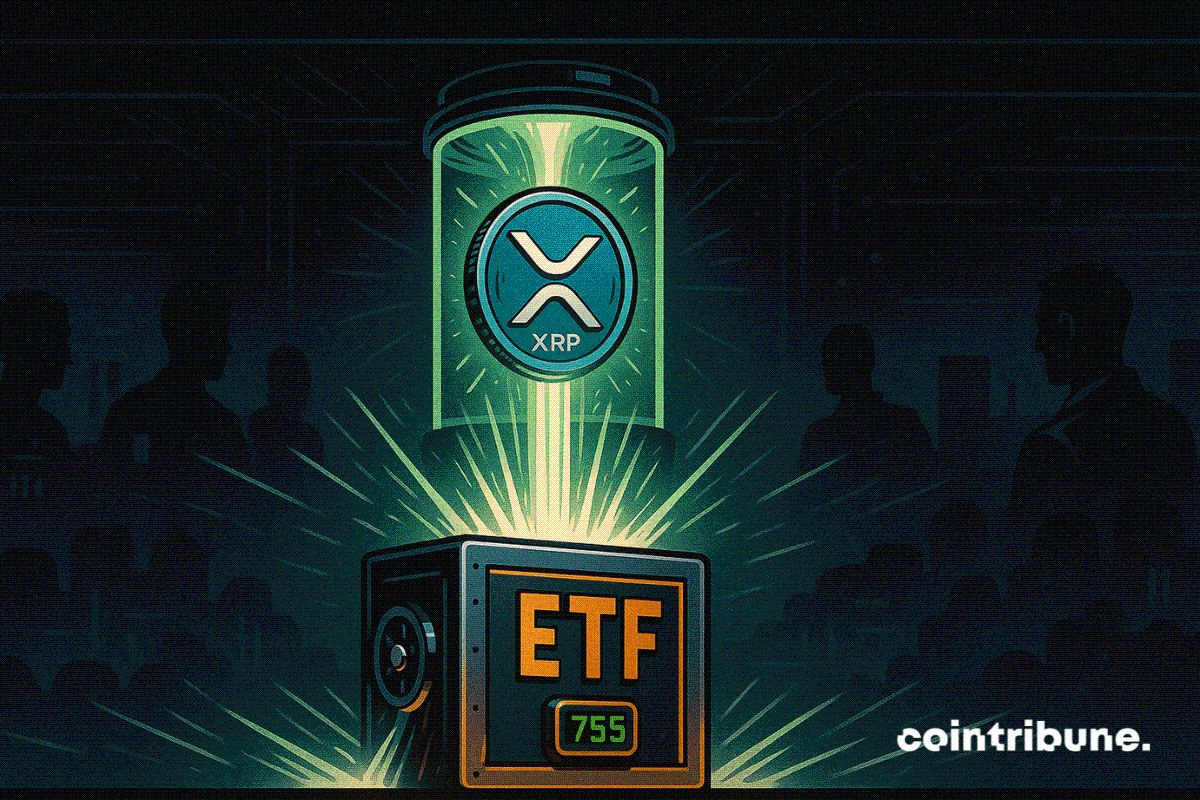Ethereum ETFs Outperforming Bitcoin: A Strategic Shift in Institutional Capital Allocation
- Q2 2025 saw institutional capital shift to Ethereum ETFs, capturing $13.3B inflows vs. Bitcoin's $88M. - Ethereum's 4-6% staking yields, regulatory clarity, and DeFi infrastructure drove its institutional adoption. - SEC's utility token reclassification and in-kind mechanisms boosted Ethereum ETF confidence. - Institutional portfolios now favor 60/30/10 allocations (Ethereum/Bitcoin/altcoins) for yield and stability. - Ethereum's 90% lower L2 fees post-Dencun upgrade solidified its infrastructure dominan
In the ever-evolving landscape of digital assets, the second quarter of 2025 marked a pivotal inflection point . Institutional investors, long characterized by their cautious approach to crypto markets, have begun to reallocate capital with a newfound clarity of purpose. The data is unequivocal: Ethereum ETFs have surged ahead of Bitcoin ETFs in institutional adoption, signaling a structural shift that could redefine the crypto asset hierarchy for years to come.
The Flow of Institutional Capital: A Tale of Two ETFs
By Q2 2025, Ethereum ETFs had captured $13.3 billion in inflows, driven by 80–90% institutional allocations. This dwarfs Bitcoin ETFs, which recorded a mere $88 million in inflows and faced $1.18 billion in outflows over the same period. The disparity is not merely quantitative but qualitative. Investment advisors, the largest institutional cohort, added 539,757 ETH ($1.351 billion) to Ethereum ETFs—a 68% increase from the prior quarter. In contrast, Bitcoin ETFs saw stagnant or declining inflows, with BlackRock's IBIT ETF struggling to match the $323 million single-day inflow of Ethereum's ETHA ETF.
Structural Advantages: Why Ethereum Won
The outperformance of Ethereum ETFs is rooted in three structural advantages:
Yield Generation via Staking
Ethereum's proof-of-stake (PoS) model offers 4–6% staking yields, a critical differentiator in a high-interest-rate environment. These yields transform Ethereum from a speculative asset into a dual-purpose investment, generating income while appreciating in value. By Q2 2025, over 4.3 million ETH were staked by corporate treasuries, reducing circulating supply and bolstering price dynamics.Regulatory Clarity
The SEC's reclassification of Ethereum as a utility token in early 2025, coupled with in-kind creation/redemption mechanisms, provided institutional investors with a legal framework to operate confidently. Meanwhile, Bitcoin's regulatory ambiguity—exemplified by the SEC's ongoing scrutiny of spot ETFs—has left it in a limbo that stifles adoption.Corporate and DeFi Integration
Ethereum's dominance in decentralized finance (DeFi) and real-world asset (RWA) tokenization has cemented its role as an infrastructure asset. Total Value Locked (TVL) in Ethereum-based protocols reached $223 billion by July 2025, compared to Bitcoin's negligible TVL. This infrastructure utility positions Ethereum as a foundational layer for innovation, unlike Bitcoin's limited use case beyond speculative trading.
The 60/30/10 Allocation Model: A New Paradigm
Institutional portfolios are increasingly adopting a 60/30/10 allocation model: 60% Ethereum-based ETPs, 30% Bitcoin, and 10% altcoins. This shift reflects Ethereum's perceived stability and income generation, which align with low-yield environments. For example, Goldman Sachs' accumulation of 160,072 ETH ($721.8 million) in Q2 underscores its role as a core holding, while Bitcoin's institutional appeal remains constrained by its lack of yield mechanisms.
On-Chain Metrics: A Deeper Dive
On-chain data further validates Ethereum's institutional momentum. Exchange-held balances now account for just 14.5% of Ethereum's total supply, the lowest since November 2020—a sign of long-term accumulation over speculative trading. Meanwhile, Bitcoin's exchange-held balances also fell to 14.5%, but without the yield incentives to justify institutional retention.
Implications for Investors
For individual and institutional investors alike, the implications are clear:
- Prioritize Ethereum ETFs in portfolios seeking both capital appreciation and income generation.
- Reevaluate Bitcoin's role as a speculative reserve asset rather than a core holding.
- Monitor regulatory developments closely, as the Genius Act and Project Crypto's outcomes could further tilt the balance in Ethereum's favor.
The Dencun upgrade's 90% reduction in Layer 2 (L2) fees has also unlocked broader real-world applications, driving Ethereum's TVL to $45 billion and solidifying its infrastructure dominance. Bitcoin, meanwhile, remains a Layer 1 store of value with limited utility in a rapidly evolving ecosystem.
Conclusion: A Fundamental Reallocation
The institutional shift toward Ethereum ETFs is not a fleeting trend but a fundamental reallocation of capital. By combining yield generation, regulatory clarity, and infrastructure utility, Ethereum has positioned itself as a superior institutional asset. As the crypto market matures, investors who recognize this strategic shift will be better equipped to navigate the next phase of digital asset adoption.
In the end, the question is not whether Ethereum will outperform Bitcoin—it already has—but how quickly the rest of the market will catch up to this reality.
Disclaimer: The content of this article solely reflects the author's opinion and does not represent the platform in any capacity. This article is not intended to serve as a reference for making investment decisions.
You may also like
2026: The Year of Federal Reserve Regime Change
The Federal Reserve will shift away from the technocratic caution of the Powell era, moving toward a new mission that clearly prioritizes lowering borrowing costs to advance the president’s economic agenda.

Over $756M In 11 days : XRP ETF Break Records

BTC Lags Behind Global Money Growth
